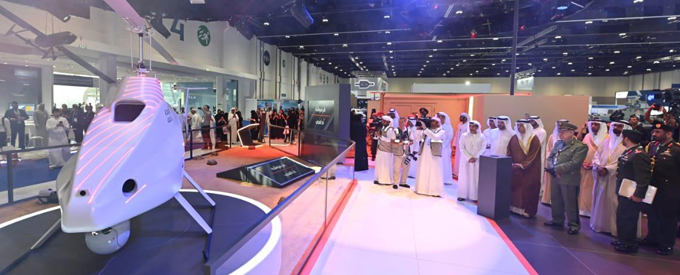2020-03-01
Safeguarding Crucial Energy and Power Supplies? There’s a Drone for That
Breaking new ground has become something of a good habit of the UAE’s. With the first atomic pile plant located in the Arab world soon to be activated in Abu Dhabi and the recent discovery of an immense new gas reserve in Jebel Ali, it’s not a habit likely to be broken any time soon.
By Dr Fahad Al Yafei, President – Platforms & Systems, EDGE
With Unit 1 of the Barakah project recently getting the green light and the 80 trillion cubic feet of gas reserves unearthed in Jebel Ali, the UAE’s energy sector is in good shape. In addition, with the UAE estimated to contribute 17 per cent of global new petrol pipeline builds by 2023, according to a 2020 report by GlobalData, it would be fair to state that the UAE’s infrastructure is vast, growing and vital to the nation’s economic diversification and future prosperity. Protecting and maintaining them, then, is essential.
To keep these industries operating at optimum efficiency and maintain this freshly-broken ground, such infrastructure needs rigorous safeguarding and surveillance.
Not only do the mega-projects that we see springing up across the UAE need protecting because of an increasingly unpredictable and challenging geopolitical climate, but they must benefit from the most advanced, cost-effective and efficient methods of monitoring and maintaining their operational integrity.
And this is where we once again find ourselves turning to drone technologies. Beyond the frontlines of modern warfare, drones are transforming the utility and energy operations space. As a simple example, where highly technical human maintenance teams encounter a range of hazards in the inspection and maintenance of expansive energy and utility projects and power grids, from trimming foliage near high-voltage equipment, to climbing towers and assessing damage in the wake of natural disasters, unmanned aerial vehicles (UAVs) offer safety through remote and autonomous capabilities.
Furthermore, specifically to the gas industry – a pertinent consideration for the UAE right now – UAVs can pinpoint the source of leaks in underground water pipelines, gas lines and find the source of outages on power lines, with unmatched accuracy. And they can do this exponentially quicker than traditional manpower could too.
The impact that an agile fleet of commercial-use drones can have on company’s bottom line, cannot be overstated when it comes to project efficiency and resilience. In addition to safety benefits, drones offer significant cost savings. Manned aircraft for line inspections bring a costly hourly rate, while drones can do the same job, minus human error, at less than 8 per cent of the cost, all the while collecting even more data than a manned mission can process.
On a global scale, PwC recently estimated in a 2019 report, that the use of UAVs in the energy sector, though in its infancy, is growing at breakneck speed, and even valued the addressable market of drone-powered solutions in the power and utilities sector at US$9.46 billion.
Within this context, considering the UAE’s extensive, cross-country oil and natural gas pipelines, LNG facilities and refineries, the adoption of drone technologies in the utilities sector could save billions of dirhams in preventing, diagnosing and pinpointing network failure causality and repair costs in the future.
And this is just focusing on existing projects. Beyond what we have now, the site selection process for upcoming projects is also being revolutionised by drone’s geo-spatial mapping and aerial imaging capabilities. It won’t be long before UAVs will execute surveying and inspection missions fully autonomously, with no need for a pilot. They will be able to fly out for a mission, return, download the received (and possible even analysed) data, recharge and be ready for their next mission – all while being remotely controlled from locations potentially half the world away.
Moving forward, it’s clear that utilities need objective, scientific intel to apply drone tech in the most valuable way. And when it comes down to it, the assets and projects underway in any given state must remain secure. And this, of course, leads on to what is perhaps the primary association and use of UAVs in the modern world: the military.
While drones are no longer the exclusive property of technologically advanced militaries, the need for their use in maintaining secure national borders has never been more important, especially as military drone programmes around the world mature and diversify. As such, the future of armed conflict will depend on the effective production, assembly and development of the advanced drone technologies.
According to a study released by the Drone Databook in 2019, at least 95 countries now maintain active military drone programmes, a 58 per cent increase from 2010. It is likely, the study, states that there are at least 21,000 military drones in operation around the globe today. The need to rise above the rest with superior military-grade drones is obvious.
In conflicts with those who can hide in plain sight, drones offer vital advantages in the detection and neutralising of hostile threats. And in a region with centralised economic assets, the 24/7 protection offered by drones cannot be overestimated.
Though UAVs are shaping our future in varying and beneficial ways, the technological potential is still to be fully explored.


No Comments